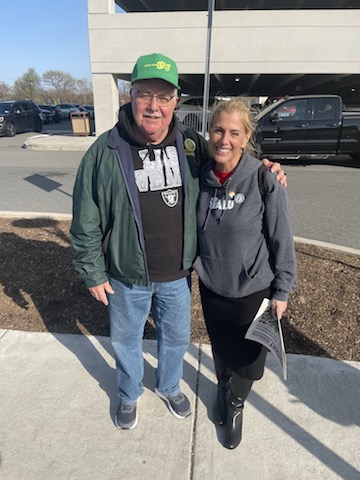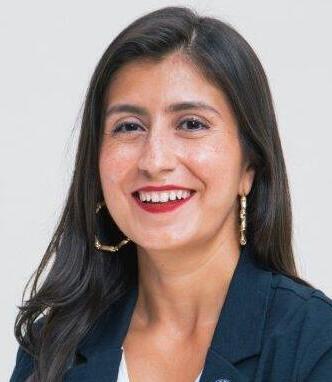New York, NY – The recent organizing victories at Amazon and Starbucks were won by workers who acted themselves in fighting against abusive management, rather than by paid staff organizers sent in by existing unions. They reminded me of reading about the shopfloor organizing of the CIO unions in the 1930’s. I would like to share my experiences of doing similar grassroots organizing as a member of DC37 where I worked. This approach is key to labor’s revival.
In 1979, I began working at Bellevue Hospital through the Comprehensive Employment Training Act (CETA), a federally-funded jobs program that placed laid off private sector workers into city and state government jobs. The program, however, was losing its federal funding so, all CETA workers in New York were facing layoffs.

We began organizing to save our jobs. Technically, we were members of DC37 AFSCME, but we had to fight on our own against the cuts and layoffs. We organized citywide rallies, and at some work locations including Bellevue, we formed worksite organizing committees. We stopped most of the layoffs with the help of our union, which finally joined us when they saw our organizing success.
The CETA fight was going on at the same time the city decided to close some public hospitals in poor communities of color. A citywide coalition was formed to fight the closures. I formed a Bellevue committee to organize members to take part in that battle.
I was elected as a shop steward in Clerical Administrative Local 1549 DC37 after one year of employment. I was seen as a fighter because of my CETA and hospital closure organizing.
In contrast to the older stewards’ lackadaisical approach to handling members’ problems, I began responding to every issue presented by members in a thorough and timely way. I recruited the most boisterous and fearless people to become shop stewards, even members who were the most critical of the union. In 1982, I was elected as a Chief Steward by the 800 members of 1549 at Bellevue.
Greater Worker Participation in the Union
When I first came to Bellevue only five or six Local 1549 members attended our lunch time meetings. Within a year after I became chief steward, these meetings had 100 to 150 members. The agendas for the meetings were about informational topics with occasional guest speakers. Rather than making speeches, I made time for members to ask questions. I set up a literature table filled with benefit information, petitions, and information about the city budget and politics.
I distributed petitions against budget cuts to the network of activists and stewards, who got them signed fully and quickly. We got members involved in making phone calls to politicians to urge them to protect the city hospitals. I produced a monthly one-page newsletter that our network of activists and stewards distributed, and our network shared information to and from our various locations.
When union leaders came to the worksite, our meetings were crowded with members. It showed the union leadership that Bellevue members were actively involved in their union. This garnered respect from the leaders.
Coalition Building
Workers at Bellevue belong to several different locals of DC37, as well as other unions such as 1199, CWA and Committee of Interns and Residents. Our 1549 activists took the lead in building working relationships with them. We did so even when union leaders citywide were at odds with each other. In 1981, we initiated Black History Programs, as well as other multi-cultural programs later on. We developed a South African Anti-Apartheid Committee that gathered petitions from all employees and patients while participating in New York City Council hearings on apartheid.
In 1988, we decided to engage in city politics and formed Bellevue Employees for David Dinkins. He was to become the first Black mayor of the city.
In the 1990’s, we started the Bellevue Coalition to Save Our Healthcare, made up of various union leaders, activists and community groups who fought for funding for our public Hospital system, along with single payer healthcare and the Clinton healthcare plan. Later, we took on the Republican leaders who tried to reduce Medicaid spending and privatize public hospitals. We petitioned the workforce and patients daily. We joined with others to attend public hearings where we confronted those who wanted to privatize hospitals. I spoke at community groups and the local Community Board about these issues. Thirty-two-thousand people attended a citywide rally at Bellevue organized by DC37 and SEIU1199.
In the late 1990’s, this coalition linked up with other Bellevue organizations, as well as an offsite Bellevue Childcare Center to fight for and build an onsite childcare center — which is still open. The aim was to open it 24-hours, seven-days-a-week for all workers at the hospital, which we still hope will happen.
Local 1549 members at Bellevue supported these important political, social, and educational coalitions. Having an active shop steward body and extensive networking meant members had a strong union and were educated on issues. We stood up against management abuse while cooperating with them on fighting budget cuts. When I spoke about politics, members listened to me because I was one of them and they knew I had their backs — and when I needed it, they had mine.
Demographically, my local was made up of mostly women of color from many backgrounds. The largest group were Black women. Yet, I was a white male who got elected and re-elected constantly by large numbers because I fought for members’ rights, told them the truth, and involved them in fighting on issues that linked all workers.
Taking the Bellevue Experience Citywide
In 1999, our parent District Council 37 became embroiled in a scandal that resulted in our international union removing our local leaders from office and putting the Council in an administratorship. When AFSCME ended the administratorship for our local in 2001, and scheduled new leadership elections, I decided to run for Second Vice President as part of a team of like-minded rank and file leaders. We all won the election.
Our first task was to completely rebuild our 20,000-member local. We did it by using the same internal education and organizing methods done at Bellevue. We have a record of success in keeping members and involving them in the union, and in mobilization actions unparalleled in DC 37, thanks to these bottom-up strategies.
The local holds regular shop steward trainings with DC37 Education Fund that always includes internal organizing strategies. We teach one-to-one membership contacts and building internal networks using interactive training methods. We hold annual Political Action and Advocacy trainings for activists and shop stewards, helping members understand the importance of engaging in politics. We were the first local in DC 37 to utilize our AFSCME International Union’s Education Department in all our trainings.
We also made sure to publish membership and shop steward newsletters regularly, especially during the COVID pandemic. We always encouraged members to speak up to local leaders when staff did not properly service them.
Out of 14,000 city workers covered by Local 1549’s jurisdiction, only 15 people have refused to sign union cards, and half of them have done so because they are also members of another union and only want to pay dues to one. We also have always been praised by the DC37 Political Action Department for being tops in recruiting volunteers for Getting Out the Vote campaigns in elections for public officials, including many members who volunteered for phone banking in the Georgia Senatorial races two years ago. The local has received letters of thanks from Senator Charles Schumer and Mayor Eric Adams. We had the most members at the Union Strong Rally held a few years ago at Foley Square and at the union rally against layoff threats last year. We also have the best record in DC 37 for member contributions to AFSCME’s political fundraising program known as the PEOPLE Program.
This “bottom up” membership-focused approach has worked for workers at Amazon and Starbucks. It has worked for us as well. Organized labor can be revitalized by following this blueprint.
Ralph Palladino is a retired 42-year veteran union leader from Clerical Administrative Local 1549 DC 37 AFSCME in New York City. For 21 years he served as Local 1549 2nd Vice President overseeing Political Action/Advocacy, Shop Steward Training, and Internal Organizing. He played a key role in organizing Metro Plus HMO workers into Local 1549.
He is now a member of the DC37 AFSCME Retirees Association and has published articles in various publications including the New York Daily News, Staten Island Advance, Asbury Park Press, Los Angeles Free Press, The Coaster, the Mayor of New York’s website, LaborPress, and Labor Notes on issues of politics, racism, immigration, and labor. He was editor of the Local 1549 “Members in the Know” and “Shop Stewards in the Know” newsletters.






